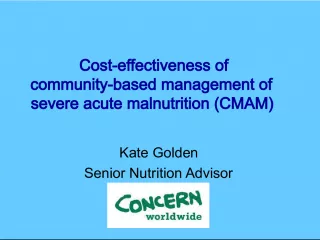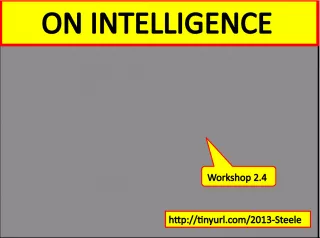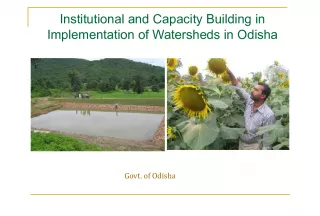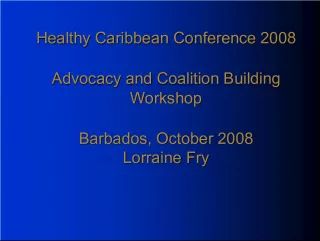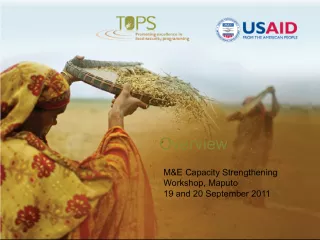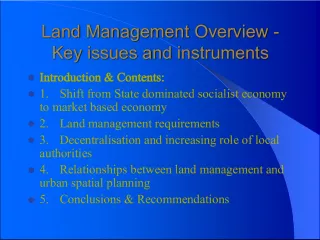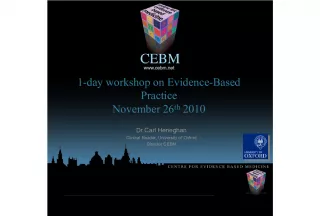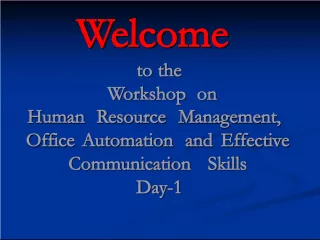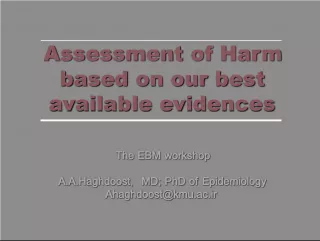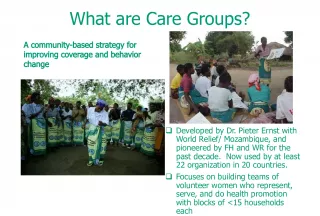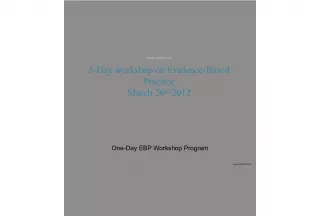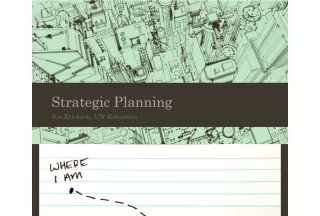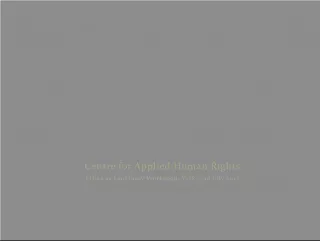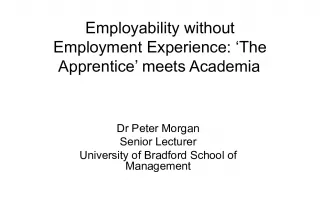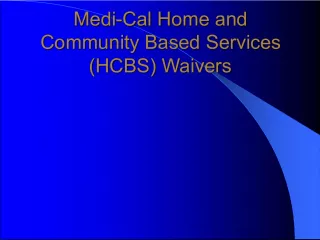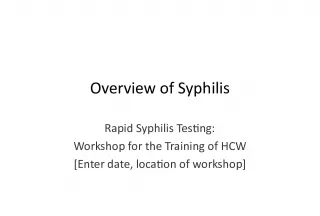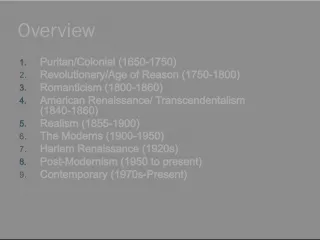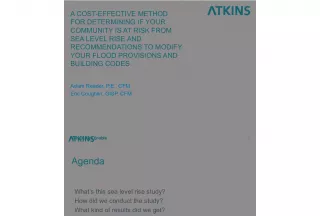Overview of Community Based Management of Acute Malnutrition (CMAM) TOP Capacity Building Workshop
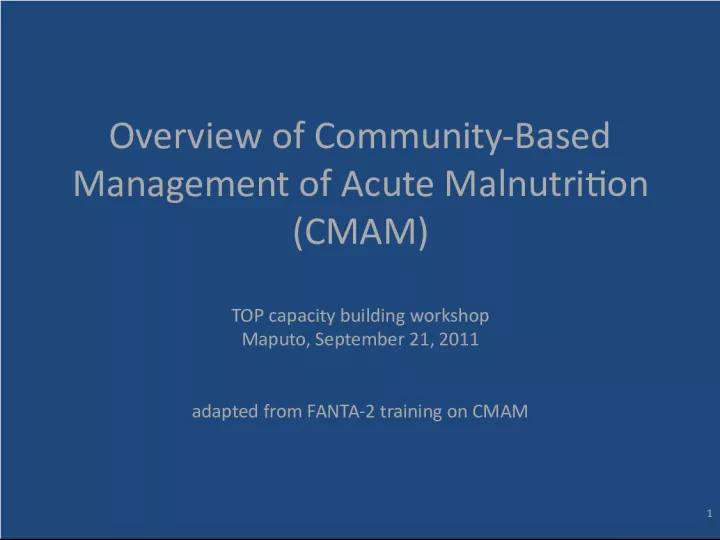

This workshop, held in Maputo on September 21st, 2011, adapted from FANTA 2 training on CMAM
- Uploaded on | 3 Views
-
 marshall
marshall
About Overview of Community Based Management of Acute Malnutrition (CMAM) TOP Capacity Building Workshop
PowerPoint presentation about 'Overview of Community Based Management of Acute Malnutrition (CMAM) TOP Capacity Building Workshop'. This presentation describes the topic on This workshop, held in Maputo on September 21st, 2011, adapted from FANTA 2 training on CMAM. The key topics included in this slideshow are . Download this presentation absolutely free.
Presentation Transcript
Slide1Overview of Community-BasedManagement of Acute Malnutrition (CMAM) TOP capacity building workshop Maputo, September 21, 2011 adapted from FANTA-2 training on CMAM 1
Slide2Today we will…• Discuss acute malnutrition • Describe recent innovations and evidence making CMAM possible. • Identify the components of CMAM and how they work together. • Explore how CMAM can be implemented in different contexts. 2
Slide3Chronic Undernutrition• Prolonged undernutrition • First two years critical • Affects body and brain • Not entirely reversible • Has an inter-generational effect • Measured by stunting, or being short for one’s age compared to reference population 2 yrs 2 months 4 yrs 4 months
Slide4Acute Undernutrition• Acute weight loss • Recent and severe process • Strongly associated with mortality • Usually associated with severe deprivation of food intake and/or disease • Measured by – wasting, or being low weight for one’s height – Edema
Slide5•Severe acute malnutrition=SAM • Moderate acute malnutrition = MAM
Slide6Underweight• Too thin (underweight) for one’s age • Composite indicator – could be because of low weight or height or both • Underweight and stunting behave similarly (e.g. similar associations, growth curves)
Slide7Today we will…• Discuss acute malnutrition • Describe recent innovations and evidence making CMAM possible. • Identify the components of CMAM and how they work together. • Explore how CMAM can be implemented in different contexts. 7
Slide88Traditionally, children with SAM were treated as inpatients • Low coverage leading to late presentation • Overcrowding • Heavy staff work loads • Cross infection • High default rates due to need for long stay • Potential for mothers to engage in high risk behaviours to cover meals
Slide99
Slide10New Innovations MakingCMAM Possible 1. RUTF 2. New classification of acute malnutrition 3. Mid-upper arm circumference (MUAC) accepted as independent criteria for the classification of SAM 10
Slide11Ready to U se T herapeutic F ood Most well-known brand name = Plumpy’nut http://www.guardian.co.uk/society/video/2009/oct/11/plumpynut-ethiopia-food-hunger
Slide12Ready-to-Use Therapeutic Food (RUTF)• No microbial growth even when opened • Safe and easy for home use • Energy and nutrient dense: 500 kcal/92g • Same formulation as therapeutic milk (F100) except it contains iron 12
Slide13Ready-to-Use Therapeutic Food (RUTF)• Ingredients – Peanuts (ground into a paste) – Vegetable oil – Powdered sugar – Powdered milk – Vitamin and mineral mix (special formula) • Additional formulations of RUTF are being researched, e.g. with chickpeas and sesame • Other formulations of ready-to-use foods for different uses are being tested, e.g. supplementation, prevention of malnutrition 13
Slide14Ready-to-Use Therapeutic Food (RUTF)• Is ingested after breast milk • Safe drinking water should be provided • Usually is well liked by children, some adults find it too sweet • Can be produced locally • Is not given to infants under 6 months 14
Slide15Previous Classification for Treatment ofAcute Malnutrition Acute Malnutrition Severe acute malnutrition Inpatient Care Moderate acute malnutrition Supplementary Feeding 15
Slide16New classifications for the Community-Based Treatment of Acute Malnutrition Acute Malnutrition Severe acute malnutrition with medical complications* Inpatient Care Severe acute malnutrition without medical complications Outpatient Care Moderate acute malnutrition Supplementary Feeding 16
Slide17N Darfur 200117 El Fasher Um Keddada Mellit Kutum Taweisha El Laeit Malha Tawila & Dar el Saalam Karnoi & Um Barow Koma Korma Serif Kebkabiya Fata Barno Tina Hospital with inpatient care El Sayah Outpatient care site 100 kms Inpatient care site
Slide18Measuring MUAC
Slide19Screening and Admission Using MUAC• Initially, CMAM used 2 stage screening process: – MUAC for screening in the community – Weight-for-height (WFH) for admission at a health facility = Time consuming, resource intense, some negative feedback, risk of refusal at admission • MUAC for admission to CMAM (WFH is optional) = Easier, more transparent, child identified with SAM in the community will be admitted, thus fewer children are turned away 19
Slide20Today we will…• Discuss acute malnutrition • Describe recent innovations and evidence making CMAM possible. • Identify the components of CMAM and how they work together. • Explore how CMAM can be implemented in different contexts. 20
Slide2121Core Components of CMAM 1 2 3 4 5
Slide22 22 Key individuals and groups in the community: • Promote good nutrition practices and CMAM services • Make CMAM and the treatment of SAM understandable • Dialogue on barriers to uptake • Find malnourished individuals in the community • Referral them for treatment • Conduct follow-up home visits 1. Community Outreach
Slide23AT THE HEALTH CENTER…23
Slide24Group nutrition counseling
Slide25Intake
Slide26Medical examination & treatment forany illnesses • Amoxycillin • Anti-Malarials • Vitamin A • Anti-helminths • Measles vaccination
Slide27Testing for oedema
Slide28Measuring weight28
Slide29Measuring height or length29
Slide30Appetite test
Slide31Classification of nutritional status
Slide32Individual counseling
Slide332. Outpatient Care for SAM• Target group: people with SAM + WITHOUT medical complications + with good appetite • Activities: – Follow-on visits at the health facility – Medical assessment and monitoring – Basic medical treatment for illnesses – Continued nutrition treatment 33
Slide343. Inpatient Care for SAM• Medical treatment according to WHO and/or national protocols • Go to outpatient care after complications are resolved, edema is reduced, and has an appetite • All infants under 6 months with SAM receive specialized treatment until full recovery 34
Slide354. Services or Programs for MAM• Treatment for illnesses or complications + routine medications • Still debating which is best formulation for “treatment” • Traditionally has been supplementation with fortified blended food, e.g. CSB • Now seeing new products like “Plumpy’sup” and CSB Plus to better address MAM 35
Slide365. Prevention of undernutrition• Counseling on infant and young child feeding, health and hygiene should be part of every component of CMAM – from community to inpatient to outpatient • This is where community-based programs such as MYAPs can add even more value 36
Slide37Today we will…• Discuss acute malnutrition • Describe recent innovations and evidence making CMAM possible. • Identify the components of CMAM and how they work together. • Explore how CMAM can be implemented in different contexts. 37
Slide38Group work• In groups, discuss the ‘way forward’ • 15 minutes 38
Slide3939Results for 21 Inpatient and Outpatient Programs (2001 to 2006)
Slide40CMAM in Different Contexts• Extensive emergency experience – Some transition into longer term programming, as in the cases of Malawi and Ethiopia • Movement toward updating national guidelines to include these new protocols – e.g., Ghana, Zambia, Rwanda, Haiti, Nepal, Mozambique • Growing experience in high HIV prevalent areas – Links to voluntary counselling and testing (VCT) and antiretroviral therapy (ART) 40
Slide41Calculating weight-for-height or BMI (ifneeded for intake) • BMI = body-mass index (=kg/m 2 or =lb/in 2 *703) Exercise: Child who is 41
